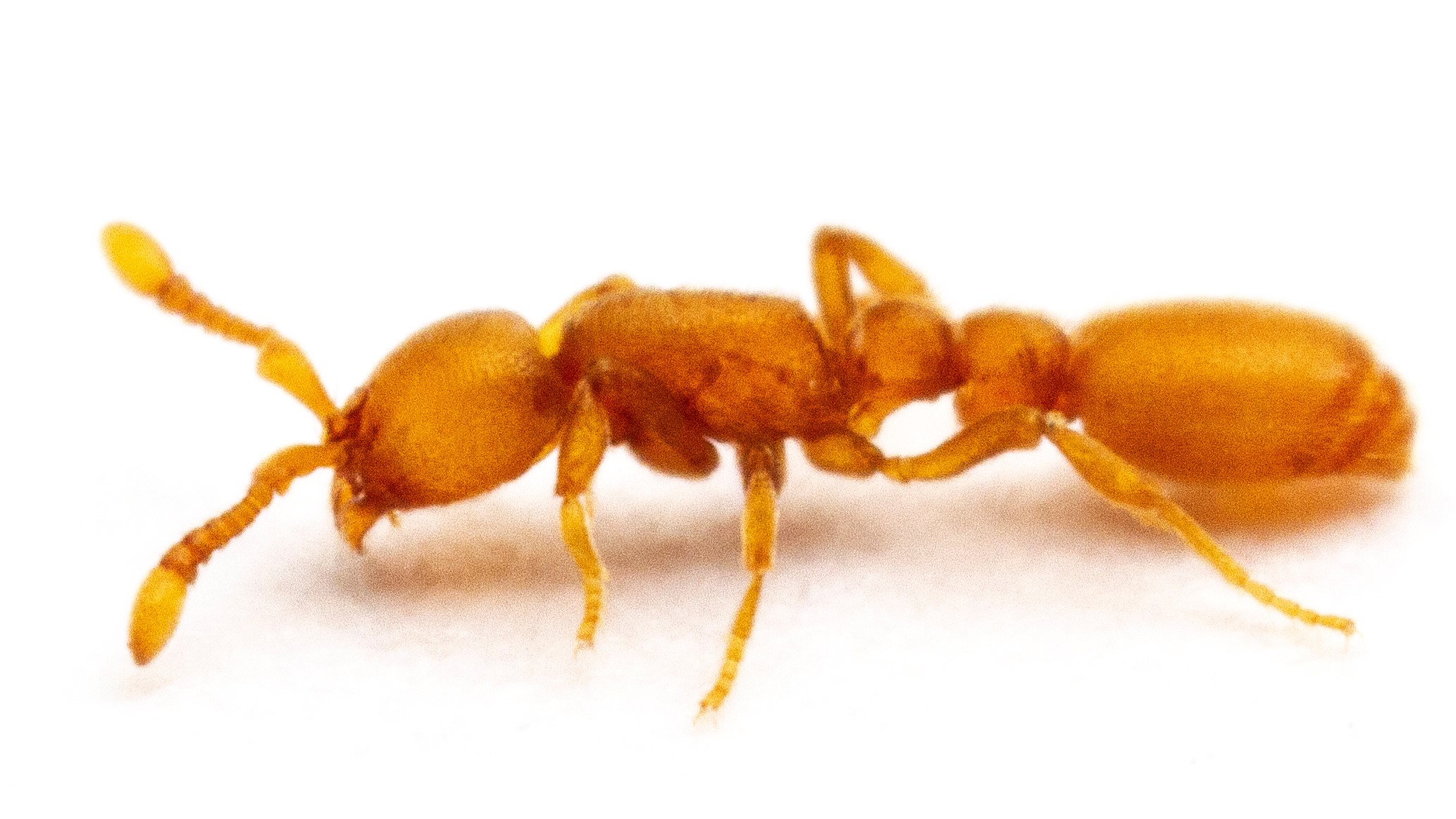'Supergene' mutation turned ants into parasitic wannabe queens
Scientists have identified a mutant strain of clonal raider ants that look like miniature queens and evolved quickly because of a single "supergene" mutation.
About a decade ago, scientists observing clonal raider ants spotted something strange: Although the species is known to be queenless, a few ants were posing as queens of the colony, lording over their hardworking counterparts. These wannabe queens had wing stubs, as well as giant eyes and ovaries.
Researchers had long assumed that these "workerless social parasite" ants, which depend on other workers for survival, acquired these traits one by one, through a series of mutations. But now, scientists have discovered that a single mutation of a "supergene" can turn regular clonal raider ants (Ooceraea biroi) workers into lazy queenlike parasites.
"This was a shocking discovery," Waring "Buck" Trible, an entomologist, John Harvard Distinguished Science Fellow and the lead author of the study in which the findings were published, told Live Science in an email. "The clonal raider ant is a queenless ant species, and no winged female adults have been observed in this species previously."
The pseudo queens are born with wings that they shed as adults, but they retain visible scars. They are the same size as worker ants, but their general indifference to labor such as brood care, foraging and nest defense makes them stand out in the colony.
Related: Mutant 'daddy shortlegs' created in a lab
The researchers isolated the parasites and found that their offspring also had wings, suggesting that the queenlike traits were genetic. They ran analyses to confirm this observation and discovered a mutation in a "supergene" on chromosome 13.
This single mutation may be the switch that turned clonal raider ants from the "wild type" usually found in nature into a mutant variant of the same species.
Get the world’s most fascinating discoveries delivered straight to your inbox.
"That's actually really surprising, given that the parasites differ from the wild types in so many traits, including morphology [a segmented thorax], anatomy, and even behavior," Daniel Kronauer, an associate professor and head of the Laboratory of Social Evolution and Behavior at The Rockefeller University in New York City, told Live Science in an email.
"What we describe here is a mutant strain that is extremely closely related to its wild type ancestors. So it's not really a different species, but maybe what could be considered an intermediate form," Kronauer added.
The researchers noted that the wannabe queens laid twice as many eggs as regular clonal raider ants. They can't let their numbers grow too big, however, because they need the workers. "When they become too common they run into problems," Kronauer said. The parasites catch their bulky wings on their pupal skin when molting, and if there aren't enough workers around to help untangle them, many of them die.
The sweet spot seems to be when the parasites make up around a quarter of the colony, according to the study, published Feb. 28 in the journal Current Biology. When the wannabe queens' proportion was higher, their survival rates plummeted.
While some species of exclusively social parasite ant queens exist in the wild, the clonal raider ant is the first documented to have evolved wannabes within its own species.
"I was very surprised to find these ants," Kronauer said. "Social parasites are typically very rare, and can only be found in a few colonies of the host species. But the crazy thing in this case is that the parasites must have arisen within the host colony via a mutation, rather than having infiltrated the colony from outside, which is the case with social parasites in the wild."

Sascha is a U.K.-based staff writer at Live Science. She holds a bachelor’s degree in biology from the University of Southampton in England and a master’s degree in science communication from Imperial College London. Her work has appeared in The Guardian and the health website Zoe. Besides writing, she enjoys playing tennis, bread-making and browsing second-hand shops for hidden gems.




